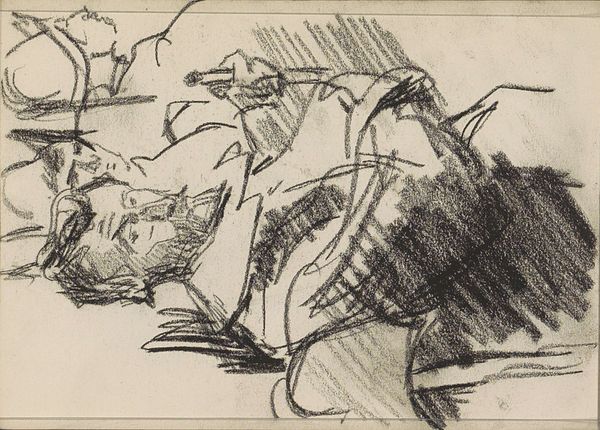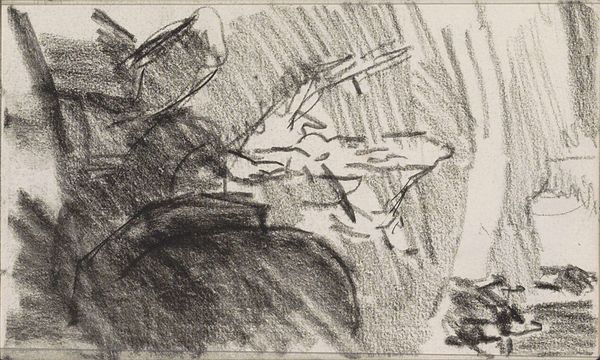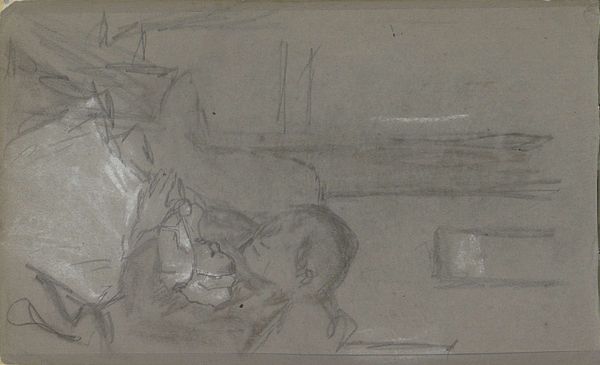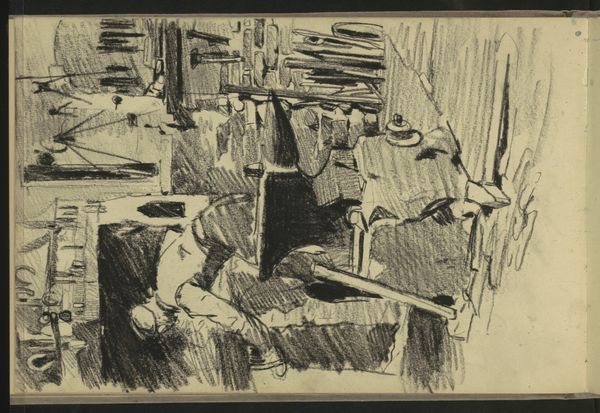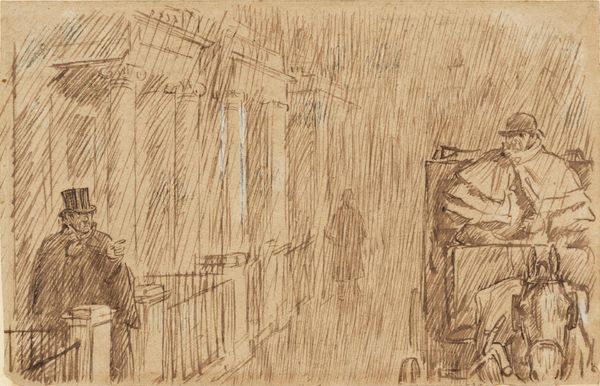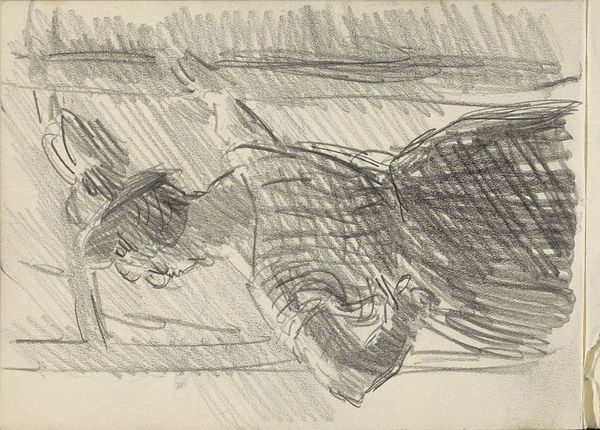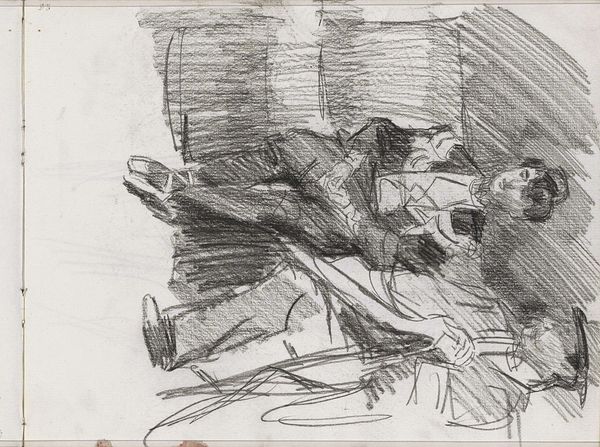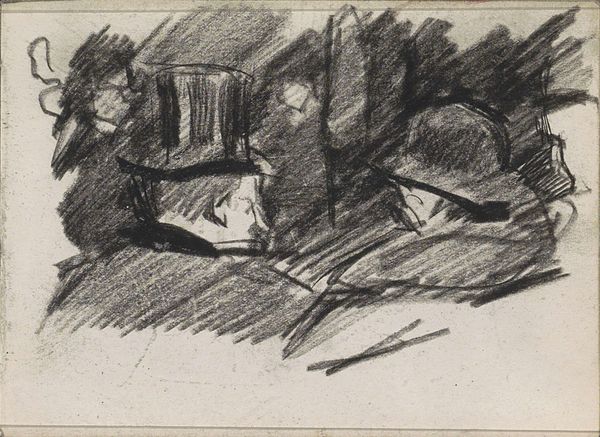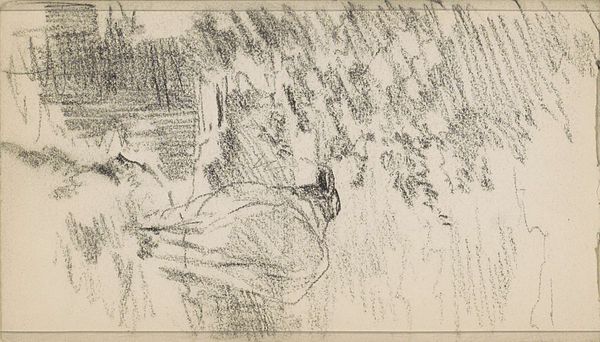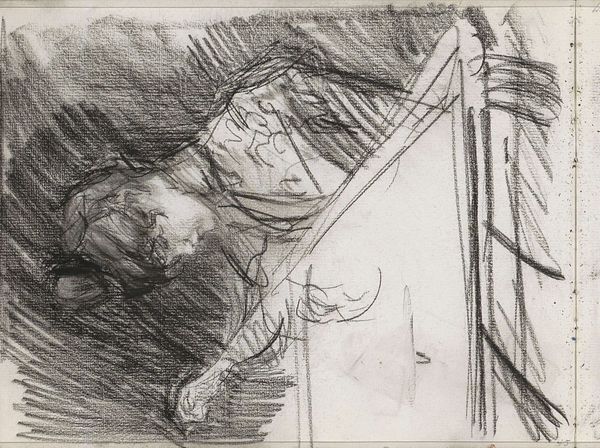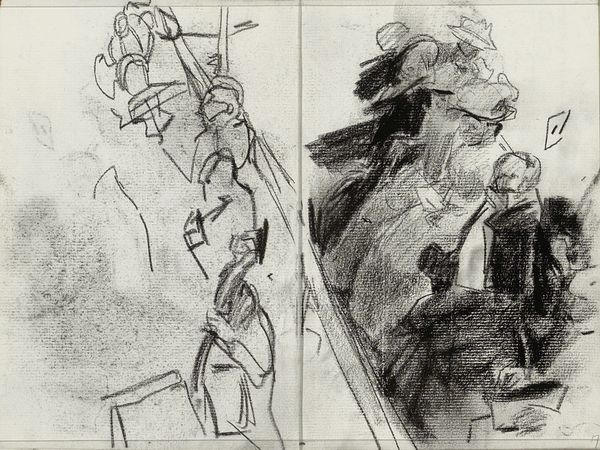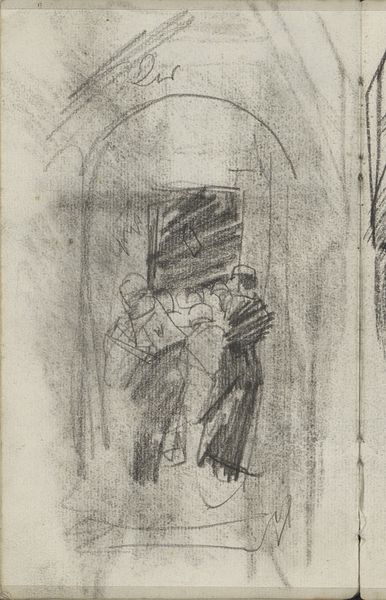
Copyright: Rijks Museum: Open Domain
Editor: So, this is "Twee mannen met hoeden" by Isaac Israels, dating somewhere between 1875 and 1934. It's a pencil drawing at the Rijksmuseum, and it looks almost like a fleeting glimpse, something quickly sketched in a notebook. What do you see in it? Curator: I see a fascinating interplay between artistic labor and social representation. Consider the material constraints – pencil on paper, easily portable, indicative of an on-the-go creation. What does that say about the artist's access and perhaps Israels' social circles, able to just whip out a pencil and sketch these gentlemen? Editor: That's a good point! It makes me think about how the accessibility of materials can change the kinds of art that get made. Like, if pencils were super expensive, would we even have this drawing? Curator: Exactly! And beyond the simple act of creating, look at what is represented, who has the privilege of being captured in a sketch. How does their social status get produced by these very marks? Notice how the sketch isn’t polished but rough, suggesting an immediacy – less concerned with flawless representation and more with quickly grasping their form. Editor: So you are seeing this as a reflection on both the artist's process and the subjects’ status, bound by materiality. How might Israels’ impressionistic approach shape what's conveyed beyond just social position, or is the rough style merely a constraint imposed by rapid creation and accessible materials? Curator: It's both constraint and intention, I think. That raw quality emphasizes a shift, even in that era, from classical portraiture, which was often about projecting power through formal perfection. The material roughness and immediacy mirrors changing social structures, doesn’t it? It acknowledges process, and even acknowledges perhaps these subjects at a human, relatable scale. Editor: It's interesting to consider how something as simple as the choice of a pencil and a quick sketching style can be so revealing about artistic process, social status, and broader cultural shifts. Thanks for highlighting that. Curator: And how labor in the studio becomes connected with a wider world, that pencil recording fleeting social interactions and observations, accessible only for those whose circles granted such quick informal rendering of the everyman into high art!
Comments
No comments
Be the first to comment and join the conversation on the ultimate creative platform.
